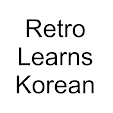This list is sorted based on how much I have personally seen them used in books, TV and media that I consume. It may not be 100% accurate and as I continue to learn I will continue to notice more the grammar that I rarely see. I have read a large variety of books at different levels and regularly watch science related content.
I want the different sections to represent how I feel about the contained grammar forms. There are actually a fair amount of grammar points missing from the entire series of Korean Grammar in Use. I will try to keep this list updated and add grammar points at the end that regularly come up but are not in the book.
I have placed a description in Korean next to each point because I've found that I understood the grammar much better once I had read the Korean description. Please note that the list is likely heavily biased to my own experiences and if you mainly consume content that is not the same domain as myself you may find certain grammar more or less common.
Please refer to the book or perhaps search the dictionary or google to find more information about the grammar points. I recommend using this as a reference as to which grammar points you know. It is good to let yourself know of the existence of grammar prior to seeing it in context so that you can identify that it is grammar.


